The Dred Scott Fight for Freedom – A National Turning Point
Posted on March 11, 2011 · Leave a Comment
By Lisbeth A. Tanz.
 With
the bang of the gavel on March 6, 1857, the Supreme Court of the United
States sealed the fate of a nation by ruling that Dred Scott, a slave
suing for his and his family’s freedom, should remain a slave. Almost
exactly four years later, seven cotton states seceded from the Union and
the war to end slavery in the United States began.
With
the bang of the gavel on March 6, 1857, the Supreme Court of the United
States sealed the fate of a nation by ruling that Dred Scott, a slave
suing for his and his family’s freedom, should remain a slave. Almost
exactly four years later, seven cotton states seceded from the Union and
the war to end slavery in the United States began.
For great, great granddaughter of the
Scotts on her father’s side, the story of Dred and Harriet Scott is one
of perseverance in the face of great adversity, courageous advancement
in the face of fear and, most importantly, a deep desire to see their
children live their lives free from the threat of enslavement. According
to Lynne, “Knowing the storyline wasn’t enough. I remember being deeply
impressed that I am a descendent and should know more.” She also knew
it was a story worth preserving and sharing.
The Dred Scott Heritage Foundation
Knowing for years that her family lineage included such a powerful
legacy, Jackson’s journey to understand the Scott’s story didn’t
actually begin until 1995. Through many years of research, she amassed
enough information to fill several 3-ring binders and formulate the germ
of an idea: the creation of a foundation to preserve the story of Dred
Scott and use it as a vehicle for commemoration, education and
reconciliation. That last goal – reconciliation – may be the loftiest
and most challenging to meet. “Since it was the U. S. Supreme Court’s
Dred Scott Decision that divided the nation, it only seemed right that
part of our mission be involved in helping heal the wounds.”
By 2005, Lynne’s vision was nearly complete. With the 150th
anniversary of the Dred Scott Decision just two short years away on
March 6, 2007, there was a lot of preparation and work to do. In 2006,
with the blessing and support of her parents, The Dred Scott Heritage Foundation
became a reality. The foundation ramped up quickly developing the
infrastructure, connections and donation base necessary to meet their
objectives.
They solicited the support of over 60 organizations – groups that
were willing to provide exposure, resources, public relations and their
own program activities to get the word out about the commemoration. The
concerted effort by all resulted in a dramatic, heartfelt and long
overdue year long remembrance of a man who could neither read nor write,
but possessed the drive and passion to do what was right no matter
what.
Honoring the Legacy of Dred and Harriet Scott
With the 150-years commemoration past, Jackson turned her sights
toward fully honoring Dred and Harriet Scott. Missing is a statue noting
the contribution this determined couple made to the course of history.
The Foundation, after a fiercely competitive artist’s competition,
selected a design by Harry Weber, former St. Louisan and prominent sculptor whose works have included sports and historical figures nationwide.
Statues, however, take money to build and this one is no exception. The Dred Scott Statue Campaign Fund drive
was launched in October 2010 at the Missouri History Museum where a
two-foot scale model of the proposed statue was also unveiled.
Complementing the fund drive is the ongoing penny drive, co-sponsored by
M&I Bank, established to help raise the necessary funds as well as
serve as an educational tool for youths and adults. Local schools are
invited to participate with many having already taken up the challenge.
Why a penny drive? Many visitors to Dred Scott’s gravesite leave behind
pennies, thought to be tributes not only to Scott, but also to Abraham
Lincoln, the President who finally abolished slavery. Read more about
the penny drive and how to start one in your school or organization
here.
Why Dred Scott Still Matters
For Scott, life began as a slave in Virginia around 1799. He
subsequently moved with his owner, Peter Blow, to Alabama and eventually
settled in St. Louis, Missouri. After Blow’s death in 1831, Scott was
purchased by John Emerson of the U.S. Army. It was during his time with
Emerson that Scott moved to Illinois (a free state) and then the
Wisconsin (free) territory in what is now known as Minnesota. It was
there that he met and married Harriet Robinson.
Upon Emerson’s death in 1843, ownership transferred to his widow,
Irene. Scott approached his new owner with a request that she grant his
and his family’s freedom. She refused. By 1846, Scott initiated the
first lawsuit encouraged by anti-slavery friends and financed by the
family of his original owner, Peter Blow.
The crux of the suit was based on Scott and his wife having lived in
Free states and/or territories. But even though Missouri supported the
doctrine, “once free, always free,” property rights were the focus of
the opposing arguments. The Scotts were seen as property, not as human
beings. The first trial, held in St. Louis in 1846, ended with the
Scotts losing their case largely because of hearsay testimony. The
judge, however, granted them the right to a second trial. It was this
trial, also held in St. Louis, which awarded the Scott family their
freedom in 1850. The case traveled to the Missouri Supreme Court in
1852. In a surprise decision, the Court reversed the 1850 ruling.
The Scotts changed their focus and sued in Federal Court for their
freedom. The case was also heard in St. Louis and again the Scotts left
with the verdict decided against them. Upon appeal, the case moved to
the U.S. Supreme Court. If the decision went against them here, their
journey through the court system would be over with their objective of
obtaining freedom for themselves and their children unmet.
Seven of the nine Supreme Court justices agreed that the Scotts
should remain slaves. But their opinion didn’t stop there. It also
stated that as property, they had no right to sue – that in fact they
weren’t even U.S. citizens. This ruling, considered by many to be the
most notorious and divisive Supreme Court ruling in the court’s history,
set off a firestorm of debate, anger and fear. The decision was a major
catalyst, which hastened events that would culminate in the U.S. Civil
War.
The Scott’s story doesn’t end there. By the time the Supreme Court
case was complete, Irene Emerson had remarried a northern congressman,
Calvin C. Chaffee, who was, ironically, a vocal opponent of slavery.
When he learned that his wife owned slaves, he demanded their immediate
release. “They received their freedom just six weeks after the [Supreme
Court] decision was rendered,” Lynne recounts. “While the nation roared
at the impact of the case, the quiet process that was playing out to
give them their freedom was a drama in itself.”
Dred Scott lived only 18 months after becoming a free man, but he
died with the knowledge his children would never be subjected to slavery
again. While he didn’t live to see slavery abolished in the United
States, his role in solidifying the opinions, values and direction of
the anti-slavery movement has earned him a permanent and special place
in history.
Without the interest and drive from Lynne Jackson, the Dred and
Harriet Scott legacy may have been relegated to brief mentions in
history books. “We were taught our responsibility today – to do what’s
right,” Lynne recalled in a 2007 St. Louis Post-Dispatch article. “Dred
and Harriet had the courage to pursue it for 11 years and put their
lives on the line. We owe them to see this through.” By Lynne’s efforts
and those of the foundation, the Scott’s bravery, persistence and
insistence that what was wrong be made right will continue to serve as a
living example for generations to come.
To learn more about how you can support The Dred Scott Heritage Foundation, please visit the website at www.thedredscottfoundation.org.


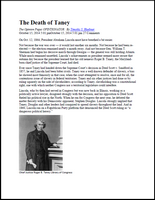
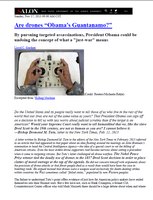
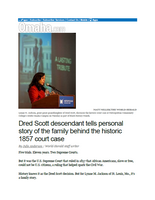
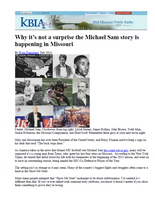
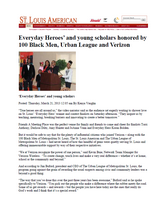

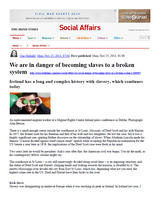

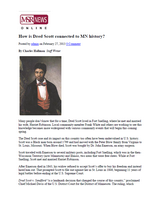
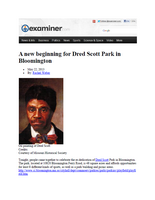
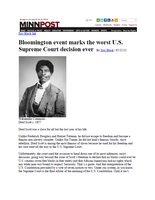
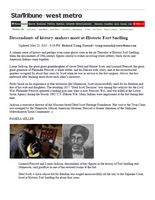
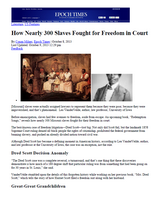

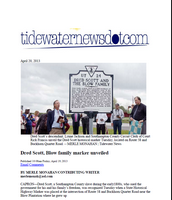
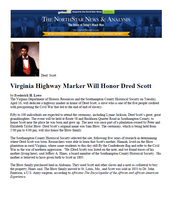
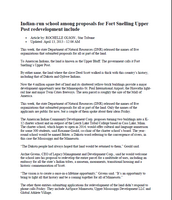

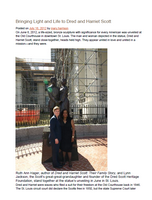
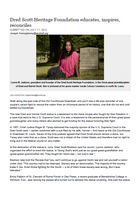
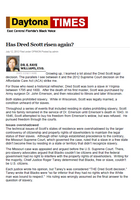
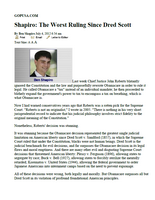
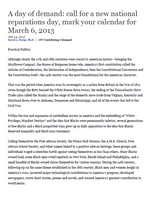
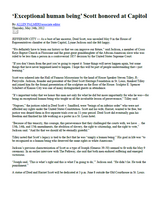
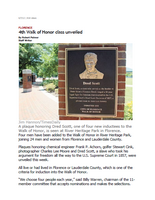
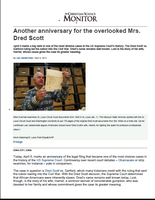
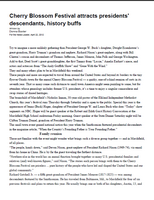
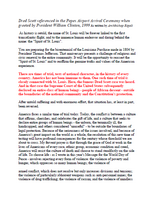
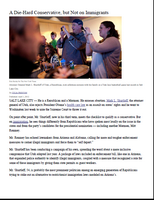

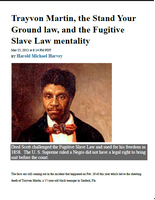
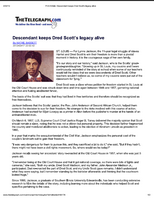
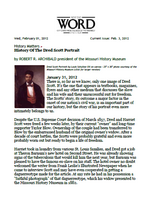
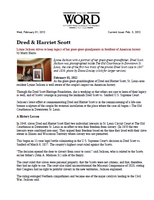
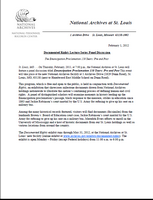




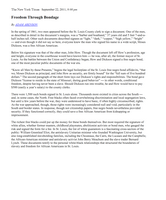

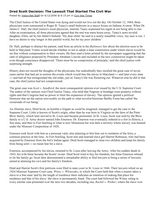
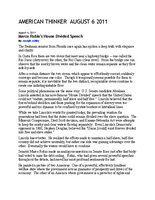

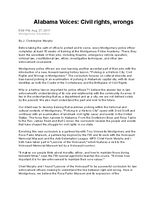
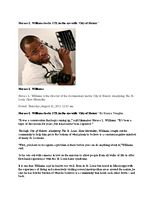
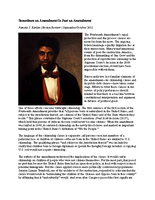
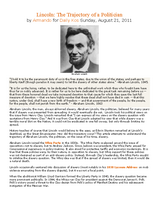
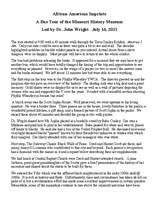



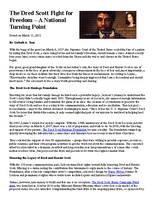

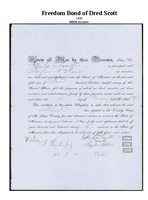


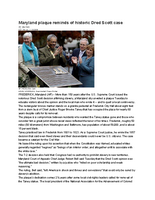


 With
the bang of the gavel on March 6, 1857, the Supreme Court of the United
States sealed the fate of a nation by ruling that Dred Scott, a slave
suing for his and his family’s freedom, should remain a slave. Almost
exactly four years later, seven cotton states seceded from the Union and
the war to end slavery in the United States began.
With
the bang of the gavel on March 6, 1857, the Supreme Court of the United
States sealed the fate of a nation by ruling that Dred Scott, a slave
suing for his and his family’s freedom, should remain a slave. Almost
exactly four years later, seven cotton states seceded from the Union and
the war to end slavery in the United States began.